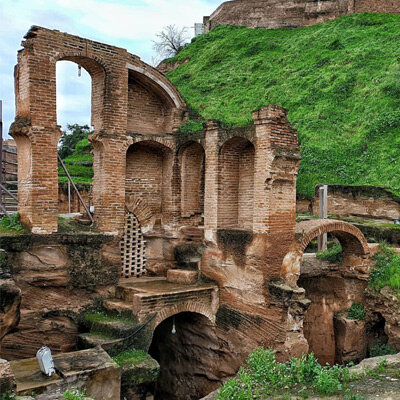UNESCO-listed Salasel castle undergoes restoration

TEHRAN - Restoration work has commenced on the UNESCO-listed Salasel castle, a significant element within the Shushtar Historical Hydraulic System situated in the southwestern Iranian city.
According to CHTN, the director of this World Heritage site recently announced the initiation of preservation and restoration efforts targeting various sections of the historical fortress.
Amin Mahdavikia, who presides over the World Heritage site, emphasized its primary objective: the enhanced preservation and maintenance of the Salasel fortress, a pivotal component of the Shushtar Historical Hydraulic System.
The restoration initiative, guided by the necessity and priority set by technical experts at the World Heritage site, has been entrusted to a skilled contractor.
Dating back to the Sassanid era, Salasel castle stands atop a massive rock in the northern region of Shushtar city. Its strategic location, surrounded by a deep moat from east to west and adjoining a river on the west side, historically fortified it against enemy attacks.
What distinguishes the castle from others is the Darian River passing underneath it, providing access to water through an internal staircase. This unique feature allowed inhabitants to withstand prolonged sieges by external forces, lasting for months or even years.
The castle, designed in an oval shape, exhibits a multidimensional structure with circular-shaped towers. Throughout history, it has undergone reconstruction and repairs, and during the Qajar era, a state mansion was erected north of the castle by the Khuzestan ruler.
The Shushtar Historical Hydraulic System, encompassing bridges, weirs, tunnels, canals, and ancient watermills, powered by man-made waterfalls, is a testament to the ingenuity stemming from earlier Elamite and Mesopotamian civilizations. It possibly drew influence from the Petra dam, tunnel, and Roman engineering.
Recognized as a Wonder of the World, the hydraulic system earned admiration not only from the Persians but also from Arab-Muslim civilizations during their zenith. The main canal played a pivotal role, facilitating the construction of a new town and irrigating a vast semi-desert plain.
UNESCO affirms the exceptional universal value of the Shushtar Historical Hydraulic System, which dates back to the 3rd century CE, possibly built upon older foundations from the 5th century BC. It stands complete with various functionalities, exhibiting large-scale engineering excellence.
Named after the city of Shushtar, whose origins trace back to the time of Darius the Great, an Achaemenid king, this site continues to stand as a testament to ancient engineering brilliance.
AFM
Leave a Comment